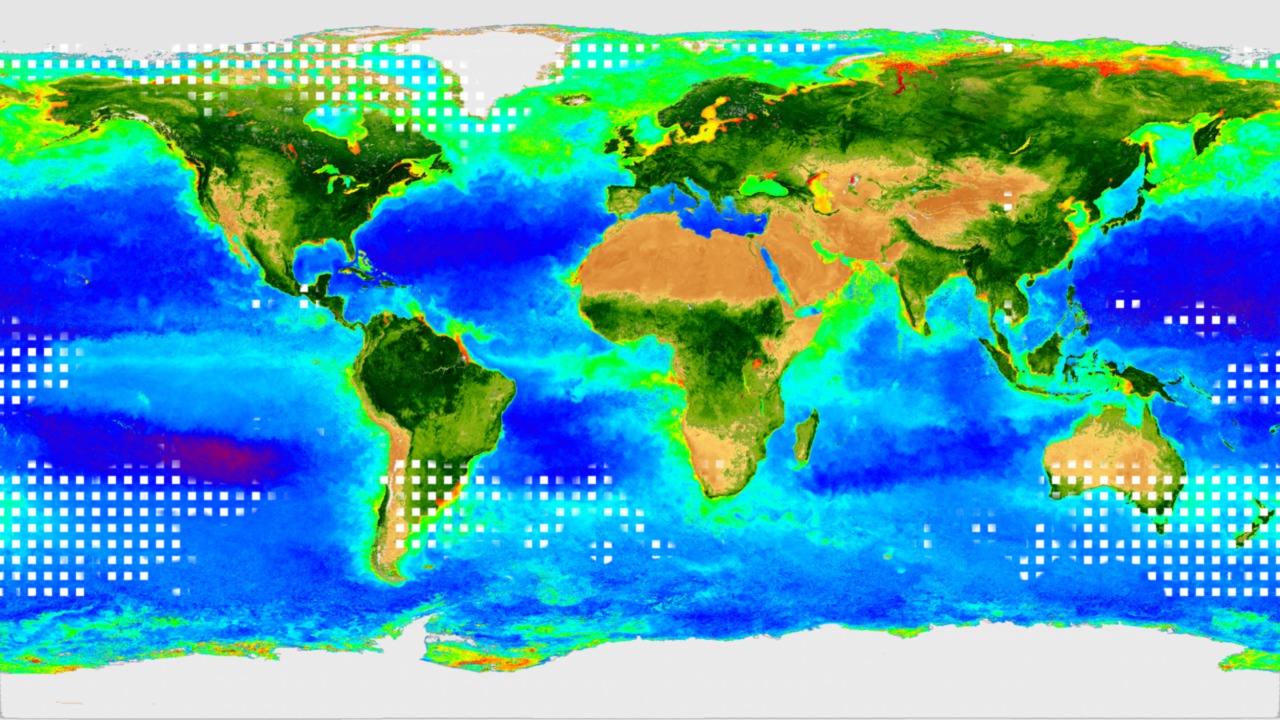Carbonivores
We all inhale oxygen and exhale carbon dioxide with every breath. For plants, it's the opposite. Tiny pores on leaves absorb carbon dioxide and release oxygen as part of a cellular process that converts sunlight and water into energy. Individually, plants take in small amounts of carbon dioxide from the air, but en masse the world's vegetation behaves like a giant lung that can change the composition of the atmosphere. The visualization below, which is based on data from the MODIS instrument and four years of carbon dioxide measurements from the Atmospheric Infrared Sounder (AIRS) on NASA's Aqua satellite, reveals how carbon dioxide concentrations fluctuate due to vegetation cover on land. Here, flashing white squares represent carbon dioxide levels in the atmosphere. Notice a sharp reduction in squares as vegetation thrives during the Northern Hemisphere summer. Conversely, more squares are present in winter as vegetation losses lead to rising carbon dioxide levels across the globe.
The global average carbon dioxide concentration increased from 374 to 383 parts per million from Sep. 2002 to Sep. 2006.

Watch plants consume carbon dioxide and alter the chemistry of the atmosphere.

Few white squares are visible over North America, Europe and Asia as carbon dioxide concentrations reach a low in summer.

Higher concentrations of carbon dioxide have returned to the Northern Hemisphere by winter.

As global carbon dioxide levels rise, annual dips caused by plant growth in the Northern Hemisphere are clearly visible.

American forests absorb 750 million metric tons of carbon dioxide each year—about 10 percent of the country's carbon dioxide emissions.
Credits
Please give credit for this item to:
NASA's Goddard Space Flight Center
-
Animator
- Trent L. Schindler (USRA)
-
Producer
- Maria Frostic (UMBC)
-
Writer
- Adam P Voiland (Wyle Information Systems)
Release date
This page was originally published on Thursday, February 9, 2012.
This page was last updated on Wednesday, May 3, 2023 at 1:53 PM EDT.
